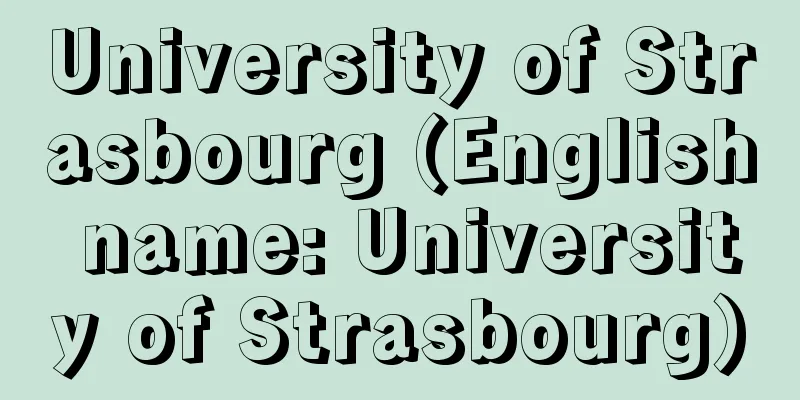Liverpool

|
Merseyside is the capital of the metropolitan county of Merseyside, part of the historic Lancashire region in the north-west of England. It is located on the north bank of the Mersey estuary, about 300 km northwest of London, a few km from the Irish Sea. It was granted a royal charter by King John of England in 1207 and began trading with the coast and Ireland, but until the Middle Ages it was just a small port town. In the 18th century, trade with America and the West Indies flourished, and it became the second largest port in England after London. The main form of trade was triangular trade, in which products such as cotton textiles produced in Manchester and the Mersey River basin in the hinterland were exchanged for slaves from the African continent, and the slaves were then exchanged for plantation crops such as sugar, molasses, and spices from the West Indies (→ slave trade). The first dock for the port was completed in 1715, and by the end of the 18th century, four more docks had been built, making the total area of the port larger than that of London. In 1830, the Liverpool and Manchester Railway was opened, and steamships connected Wirral, located on the opposite bank of the Mersey River. Economic development led to an influx of immigrants, and the Irish population increased sharply during the Irish potato famine of 1845-49. In the early 20th century, docks were dotted along the Mersey River for about 11 km, from Hornby Dock (1884) in the north to Herculaneum Dock (1866) in the south. After World War II, the native industries and trade in the hinterland declined, and the decline in capital investment in the port led to an increase in unemployment, but the city's functions and role as a support for the economic life of its citizens were maintained. After that, the port expanded to handle container cargo in addition to general cargo, and in 2012 it became a terminal for cruise ships. In 2004, the docks and historic city center were registered as cultural heritage of the World Heritage Sites as a historic maritime trading city that supported the development of the British Empire, but in 2021 the registration was cancelled due to irreversible damage to the landscape and other aspects caused by the redevelopment of the port. As the city that gave birth to the world-famous rock group, The Beatles, in the 1960s, tourism development to visit the site associated with the city is attracting attention. Historical buildings include the 18th century City Hall, the 19th century St. George's Hall designed by Charles Robert Cockerell, the neo-Gothic style Liverpool Cathedral (1904-78), and the Catholic Metropolitan Cathedral (1967), which has an impressive modern design. Cultural and educational facilities include Tate Liverpool (a branch of the Tate Gallery), the National Museum of Liverpool, which includes seven facilities such as the Maritime Museum, the International Slavery Museum, and the Walker Art Gallery, and the University of Liverpool (founded in 1881). It is also the home of the Royal Liverpool Philharmonic Orchestra and the world-famous professional soccer teams Everton and Liverpool FC. It is connected to Birkenhead on the opposite side of the Mersey River by ferry, as well as an underground railway tunnel completed in 1886 and an underground car tunnel that began operation in 1934. It has an area of 112 km2 and a population of 466,415 (2011). Source: Encyclopaedia Britannica Concise Encyclopedia About Encyclopaedia Britannica Concise Encyclopedia Information |
|
イギリス,イングランド中北部西寄り,歴史的なランカシャー地方の一部をなすマージーサイド大都市カウンティ metropolitan county(あるいは都市州)の中心都市。ロンドンの北西約 300km,アイリッシュ海から数km湾奥のマージー川河口北岸に位置する。1207年イングランド王ジョンより勅許状が与えられ,沿岸部やアイルランドと交易を行なうようになったが,中世までは小さな港町にすぎなかった。18世紀に入り,アメリカ大陸や西インド諸島との貿易が盛んになり,ロンドンに次ぐイギリス第二の港となった。貿易のおもな形態は三角貿易で,後背地のマンチェスターやマージー川流域で生産される綿織物などの製品とアフリカ大陸の奴隷が交換され,さらに奴隷たちは西インド諸島産の砂糖,糖蜜,香辛料などのプランテーション作物と交換された(→奴隷貿易)。港湾の最初のドックは 1715年に完成し,18世紀末までにさらに四つのドックが建造され,総面積でロンドンを上回った。1830年リバプール・アンド・マンチェスター鉄道が開通し,マージー川対岸のウィラルとは蒸気船で結ばれるようになった。経済発展に伴って多くの移民が流入し,特に 1845~49年のアイルランドでのジャガイモ飢饉ではアイルランド人が急増した。20世紀初頭には,北はホーンビー・ドック(1884)から南はヘルクラネウム・ドック(1866)までマージー川沿い約 11kmにわたってドックが点在するようになった。第2次世界大戦後,後背地の在来産業や貿易が衰退し,港湾への設備投資の減少が失業者の増大を招いたが,市民の経済生活を支える都市機能およびその役割は維持した。その後,港湾は一般貨物のほかコンテナ貨物も取り扱うようになり発展,2012年にはクルーズ客船のターミナルとなった。2004年大英帝国の発展を支えた歴史ある海洋商都として,ドック群と歴史的市街地が世界遺産の文化遺産に登録されたが,港湾の再開発により景観などが不可逆的な損失を被ったとして2021年に登録を抹消された。1960年代に世界的なロックグループ,ビートルズを生み出した街としてゆかりの地を訪れる観光開発が注目されている。歴史的建造物として,18世紀の市庁舎,チャールズ・ロバート・コカレル設計の 19世紀のセント・ジョージズ・ホール,ネオ・ゴシック様式のリバプール大聖堂(1904~78),モダンなデザインが印象的なカトリックのメトロポリタン大聖堂(1967)がある。文化・教育施設としては,テート・リバプール(テート・ギャラリーの分館)のほか,海事博物館や国際奴隷博物館,ウォーカー・アートギャラリーなど七つの施設を包含するリバプール国立博物館,リバプール大学(1881創立)などがある。ロイヤル・リバプール・フィルハーモニー管弦楽団,世界的に有名なプロサッカーチームのエバートンとリバプールFCの本拠地でもある。マージー川対岸のバーケンヘッドとはフェリーのほか,1886年完成の地下鉄道トンネル,1934年運用開始の地下自動車トンネルで結ばれている。面積 112km2,人口 46万6415(2011)。
出典 ブリタニカ国際大百科事典 小項目事典ブリタニカ国際大百科事典 小項目事典について 情報 |
>>: Battle Hymn of the Republic
Recommend
Senaga Kamejiro - Senaga Kamejiro
Okinawan activist and politician. Born in Tomigus...
Lactic acid
It is an α-hydroxy acid, also known as oxypropion...
Omogo [Village] - Omogo
A village in Kamiukena County in south-central Ehi...
Shindatsu Sodo
A peasant uprising occurred in Shinobu and Date co...
Pit dwelling - tateanajuukyou
It is a semi-underground dwelling made by digging...
Rostov-Suzdal Principality (English spelling)
A principality of medieval Russia that existed in ...
Backward reasoning - Ushiromukisuiron (English spelling) backward reasoning
One of the reasoning methods used in research in t...
Mount Entsu
...A temple of the Rinzai sect of Buddhism, Daito...
Depression
Also called depression. It is similar to the depre...
Epidermal nevus
...Flat brown spots called nevus spilus are often...
Wicken Fen - Wicken Fen
…Because of its unique history, a dialect close t...
Company name - Shago
A title that indicates the status of a shrine. The...
bracchium
…Hippocrates used brachiōn together with pēchys t...
Idealism - idealism (English spelling)
Idealism refers to a mental attitude of striving ...
Damia - Damia (English spelling)
French chanson singer. Her real name was Marie-Lo...









